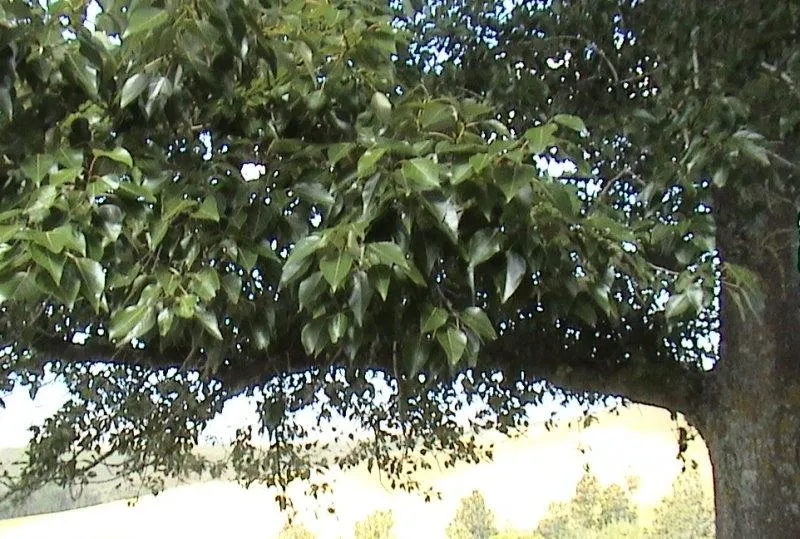
Fodder from trees
Feeding livestock from trees is not a new idea. When pastures brown off in summer or early autumn, having trees already growing on your block can provide valuable feed without the cost or logistics of buying in balage or hay.
You can also grow summer forage crops like Pasja or Hunter turnip-rape, but tree fodder is often overlooked despite its benefits. Several species of trees and shrubs already established on many farms can offer excellent supplementary feed during dry spells.
A Long History of Tree Fodder
The idea goes back a long way. One version of the Bible (Exodus 31) tells of Jacob feeding his ewes on poplar foliage, and they thrived. In fact, more livestock around the world are fed tree foliage than grazed on pasture. In many tropical or developing countries, animals are walked through natural vegetation all day to browse on trees. Even wild animals such as giraffes depend on foliage.
In 1986, a New South Wales farmer credited his survival through two five-year droughts to the kurrajong trees scattered across his property. Every day, he climbed and cut branches to feed his sheep.
Several New Zealand farmers have also been quietly using tree fodder for decades. One Wairarapa farmer told me he’d been feeding trees to his stock for more than 40 years. Willows along riverbanks can be an excellent summer feed, and since some varieties like crack willow are considered weeds, feeding them can solve two problems at once.
Why Tree Fodder Isn’t Common
So why don’t more Kiwi farmers use tree fodder? Some reasons include:
The effort and risk of pruning large trees
Lack of training in safe pruning techniques
Trees becoming unmanageable if not pruned early
Obstacles like fences or poor access
Limited awareness of feed value
One farmer ended up stuck in a tree three times when his cattle kicked his ladder away. Not ideal.
Still, several southern North Island farmers have had excellent results with tree fodder, and their experience led to a project supported by MAF’s Sustainable Farming Fund. This included farmer groups in Wairarapa, Hawke’s Bay, and Rangitikei, along with regional council officers and researchers from Massey University, AgResearch, and HortResearch.
The project gathered practical information, ran trials, and held field days to encourage wider use of tree fodder as a reliable backup feed.
When and What to Feed
Summer is the best time to harvest tree fodder, when pasture quality declines. Massey University trials in Wairarapa showed that feeding willow foliage to ewes during mating (over seven weeks in February and March) led to significantly better results than leaving them on droughted pasture.
Ewes supplemented with tree fodder had a 122 percent weaning rate compared with 92 percent in the control group, with higher total lamb weight weaned per ewe.
Willows and poplars are the most suitable trees. Many farms already use them for erosion control or shelter, and they are widely available as poles from regional councils or nurseries. Some cultivars are more resistant to possum browse or diseases like poplar rust. Regional council staff can advise on the best options for your area.
How to Feed Willow and Poplar
Tree pruning can be done every second summer and is essential to avoid trees becoming too large and dangerous. Many farmers “pollard” their trees at about two metres high, encouraging bushy regrowth that is easier and safer to cut. Pollarding also keeps the leaves out of reach of grazing animals.
Alternatively, browse blocks can be planted at high density (up to 6000 poles per hectare). Once established, these can be grazed directly, then trimmed back nearly to ground level to regrow for next summer. This works well on damp, less productive corners of the farm. As the trees grow, the understorey develops into good grazing as well.
Pennies from Heaven
Poplars also provide a bonus feed source when they shed their leaves in response to drought. These leaves are palatable and rich in trace elements, and livestock will quickly clean up what falls to the ground. While not a full replacement for good pasture, they can help carry stock through a tough season.
What Makes Tree Fodder Valuable
Poplar and willow foliage contains condensed tannins (CTs) and phenolic compounds that offer better feed value than dry or poor-quality pasture. Professor Peter Kemp from Massey University found that a mature tree could yield up to 22 kg of edible forage, with willows often having higher CT content.
The bark also has some nutritional value, making these trees even more useful in hard times.
Is It Worth the Effort?
While there is some cost and effort involved, feeding tree fodder during a drought is often better than buying in feed. Many farmers find it satisfying to rely on what they’ve grown themselves.
One Wairarapa farmer noticed a remarkable change. The first time he pruned a tree, his sheep ran away. The second time, they ran toward the sound of the chainsaw.
In Hawke’s Bay, a contractor chipped an old poplar tree and left the trailer in the deer paddock overnight. By morning, the deer had eaten every bit.

